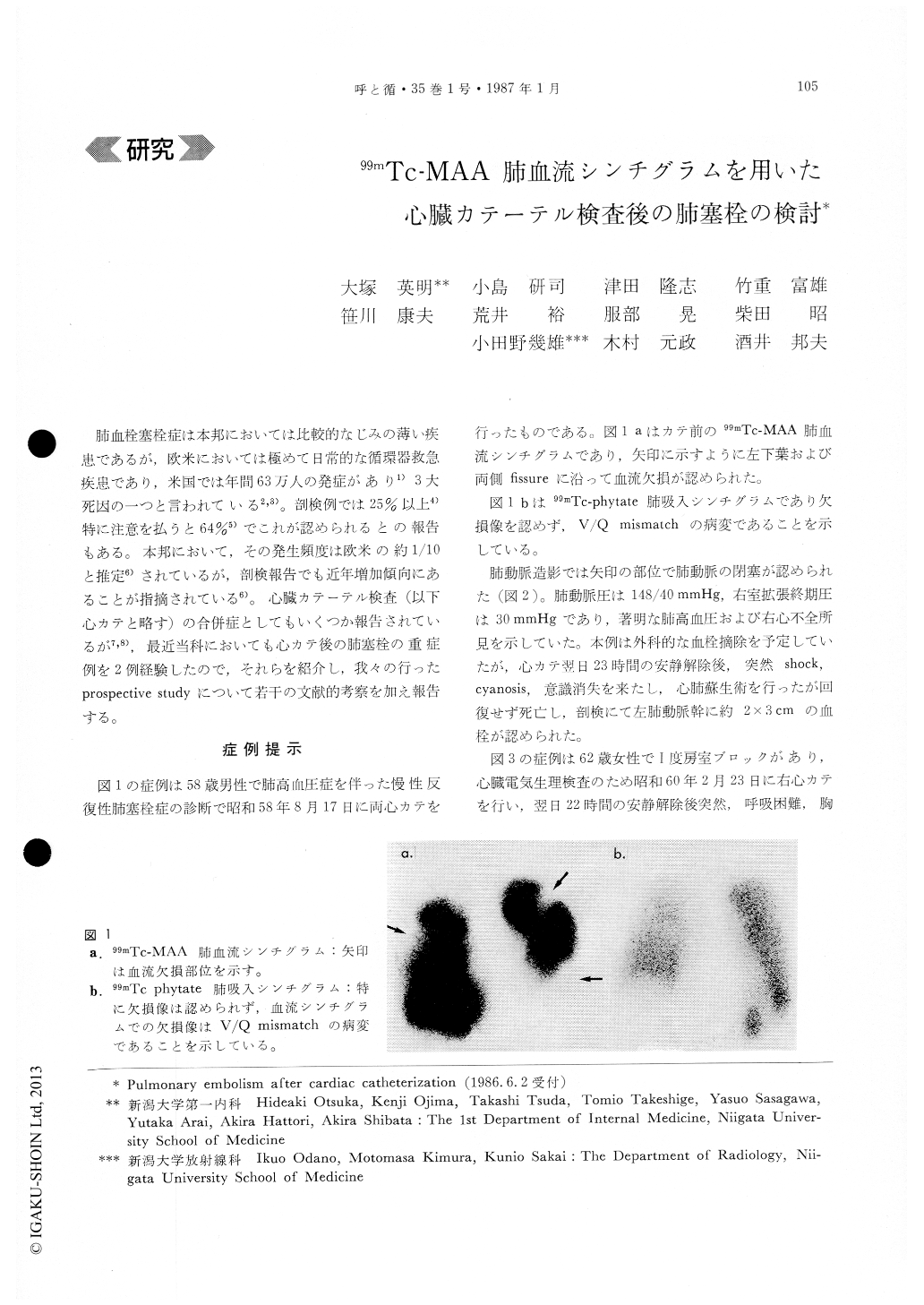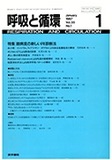Japanese
English
- 有料閲覧
- Abstract 文献概要
- 1ページ目 Look Inside
肺血栓塞栓症は本邦においては比較的なじみの薄い疾患であるが,欧米においては極めて日常的な循環器救急疾患であり,米国では年間63万人の発症があり1)3大死因の一つと言われている2,3)。剖検例では25%以上4)特に注意を払うと64%5)でこれが認められるとの報告もある。本邦において,その発生頻度は欧米の約1/10と推定6)されているが,剖検報告でも近年増加傾向にあることが指摘されている6)。心臓カテーテル検査(以下心カテと略す)の合併症としてもいくつか報告されているが7,8),最近当科においても心カテ後の肺塞栓の重症例を2例経験したので,それらを紹介し,我々の行ったprospective studyについて若干の文献的考察を加え報告する。
We performed lung perfusion scintigrams before and after catheterization in consecutive 15 patients. Both right and left heart catheterization (9 patients), only right heart catheterization (5 patients), and only left heart catheterization (1 patient) were performed using percutaneous femoral approach with catheter intro-ducer. After removal of all catheters, manual compres-sion was carried out, and after completion of the hemo-stasis, 2kg sand-bag was placed on the groin for 6 hours and each patient was then confined to complete bed rest for about 24 hours. Of 15 patients, 6 patients (40 %) demonstrated new pulmonary perfusion defects on the next day following catheterization, but these defects disappeared within a week. None of 6 patients with pulmonary embolism were symptomatic, and there were no changes in Chest X-ray films, spirogram and blood chemistry. Frontal plane QRS axis showed the right axis deviation in more than 30 degrees in 2 cases. And PaO2 showed significant decline by more than 10 mmHg in 3 cases. Duration of manual compression was signifi-cantly longer (p< 0.01) in patients who developed new perfusion defects than in patients who had no defects. New perfusion defects could develop without right heart catheterization in 1 case. These data suggested that the prolongation of compressing time of the puncture site and/or subsequent hematoma caused by technical failure may be an important factor in the development of pulmonary embolism.

Copyright © 1987, Igaku-Shoin Ltd. All rights reserved.


